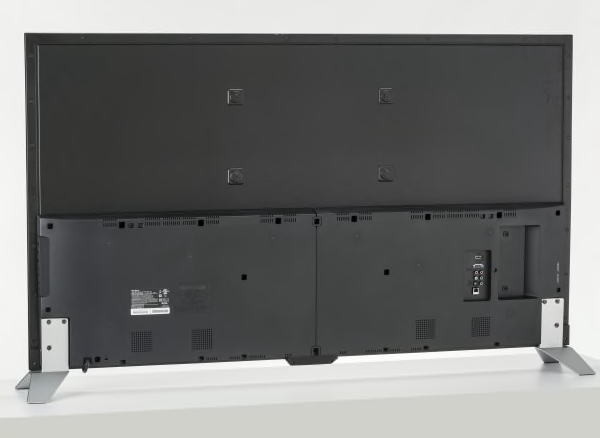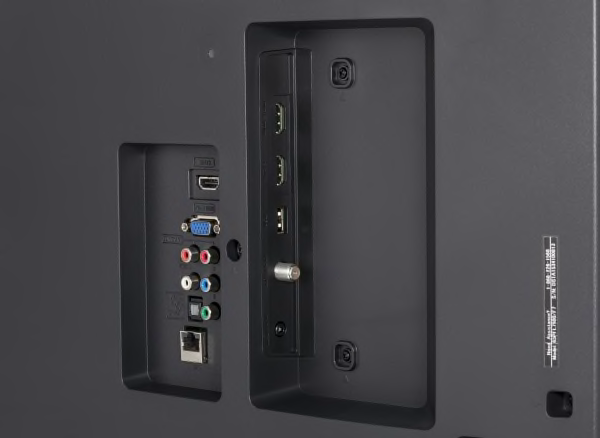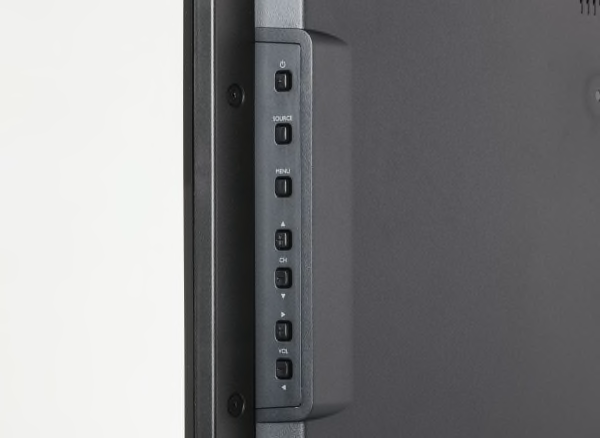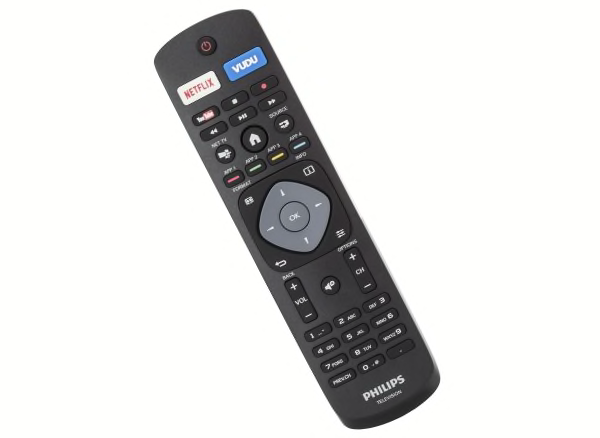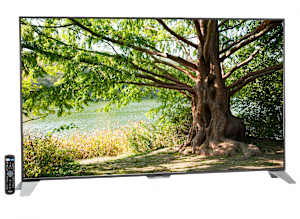PICTURE QUALITY It did a very good job displaying fine detail. Color accuracy was very good, with flesh tones and other image content looking natural. Contrast--the difference between the darkest blacks and brightest whites--was good, so images had depth and dimension, typical of most models we test. The brightness level was good, making it a suitable choice for most rooms. Black levels were generally good, though not as dark as better performers on the darkest scenes. There was visible banding (unnatural contours) on scenes with subtly shaded light-to-dark areas, such as a sky during sunset, rather than smooth transitions. There was slight display non-uniformity that created brighter cloudy areas most noticeable on very dark scenes (or in the black bars of a letterboxed movie). We routinely see this issue with LCDs and severity can vary from model to model. Check your model and see if you find it a problem. The deinterlacing and film mode operations were excellent on HD content; there was little or no trace of jaggies on the edges of objects for video and film-based 1080i video content, such as from cable.
VIEWING ANGLE This Philips has a moderate viewing angle overall, decent, but not quite as good as the better-performing TVs we've tested. The optimal seating position for best picture quality is directly in front of this model. When we viewed the TV from the sides, image quality got worse. The picture showed a slight loss of color, along with a moderate color shift. Black levels visibly brightened, reducing contrast especially on dark scenes. When viewing the image from above or below eye level to the screen, the vertical viewing angle was very good. The picture showed minimal change in color, contrast, and black level.
ULTRA HD PERFORMANCE Overall, very good. This Philips UHD TV delivers full 4K picture detail, along with very good HD-to-UHD upconversion. All native 4K content we played on this model, including movies and test videos was presented in full detail with excellent image fidelity when played back via the TV's HDMI input. It also supports video streaming of 4K programs via both Netflix and YouTube (among other sources), and again, images were clean and finely detailed. This model does not have HDR (high dynamic range) capability. Using the TV's USB port, we were able to play back 4K videos from a flash drive which were encoded in the MP4 format, but not our HEVC, or VP9 test files. With photo play back, high-resolution images were unfortunately downscaled to lower 1080p resolution, not taking advantage of the display's detail potential. With regular HD content, the TV's HD-to-UHD upconversion processing was very good, with edges along diagonals of image content showing very slight jaggies, just short of the best we've seen. All three of the TV's HDMI inputs comply with the latest HDMI 2.0/HDCP 2.2 specification, a requirement for compatibility with emerging 4K movie play back devices such as a 4K Blu-ray player.
MOTION BLUR This Philips TV has good motion performance, with some blurring on our motion tests. Though this model includes Philips's "Perfect Motion Rate", a feature designed to reduce motion blur, we found it was ineffective.
SCREEN REFLECTIVITY Though not as mirror-like as on some models, this screen surface is glossy and therefore susceptible to reflections from a nearby lamp or window. The screen is dark so it does a good job reducing glare from ambient light and maintains contrast even in a bright room.
SOUND QUALITY This model has good sound quality; about average among the models we've tested. When watching a movie blockbuster, a concert, or TV show, it delivers decent performance but falls short of the better performers. With movies, dialog was generally clear, though a bit muffled, and remained well balanced with respect to background music and other sounds. Bass was decent, but a tad boomy, which added some fullness to the sound, but treble lacked detail, with the overall sound was a bit closed in. The speakers could play at a fairly loud volume level, however, quality degraded at the higher settings. All told, most people would find this sound quality acceptable.
EASE OF USE Overall, it was OK to setup and fairly easy to do routine things. The dark labeling of the connectors on the TV console is very difficult to read. On first power up there is an on-screen guide that helps you through setting up the TV. The remote's major function buttons were sufficiently large and have high-contrast labeling, making them easier to see and navigate. We found the TV responded slowly to commands from the remote.
STAND ASSEMBLY The TV's base does not come pre-attached, so some assembly is required. Mounting the support stand to the TV is straightforward, though the stand requires the assembly of one part before mounting. The TV's stand extends to the far ends of the display, which means the table top you'll be setting the TV on will need to be at least as wide as the display itself.
INTERNET FEATURES This TV provides advanced Internet capabilities via its "Net TV" portal with access to a library of applications. Movie streaming services include: Netflix, Vudu, YouTube.
CONNECTIONS This model has three HDMI inputs--one supports MHL (Mobile High-definition Link), one "component/composite shared" input (which means you can only use one type or the other at a time). It also has one USB port, an optical digital audio out, a headphone out, an Ethernet port, a VGA video input. Wi-Fi wireless networking. DLNA, to access files within your home network. Casting, to control the TV from a smartphone that has the suitable app installed. Screen mirroring, where the image on your smartphone or other compatible device can also appear on the TV. Note: HDMI and other cable connections made to the rear-facing panel will protrude beyond the panel's slim depth.
INCLUDED IN THE BOX A printed user manual. A quick start guide. A remote control with batteries.
ABOUT FIRMWARE VERSION: Our test results and picture settings are valid for the version of firmware indicated. If your TV's firmware differs from the one shown you either have an older or a newer version. Manufacturers may periodically upgrade the TV's firmware to enhance operation, fix bugs, or add features. Firmware upgrades may be downloadable directly to your TV via a wired or wireless network (if internet capable), or USB port, depending on your TV's capability. You can check your TV's firmware version, or upgrade to the latest firmware by pressing the menu, or home button on your remote and navigating to the appropriate submenu, typically under settings. Consult the user manual or manufacturer's website if further guidance is needed.


















